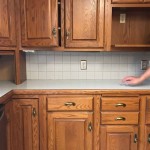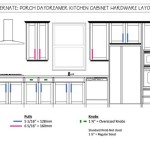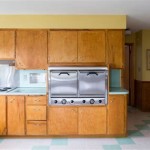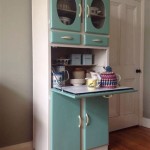The Best Way to Repaint Kitchen Cabinets
Kitchen cabinets are a significant feature in any home, and their appearance can significantly impact the overall aesthetic of the space. If your kitchen cabinets are looking tired or outdated, repainting them can be a cost-effective way to give your kitchen a fresh new look. While the task may seem daunting, with the right preparation and technique, you can achieve professional-quality results. This article will guide you through the best way to repaint kitchen cabinets, covering essential steps and tips for a successful makeover.
1. Preparation: The Foundation for a Successful Paint Job
Preparation is key to a successful paint job, and it’s especially important for kitchen cabinets. These surfaces endure a lot of wear and tear from daily use. Taking the time to prep thoroughly will ensure the paint adheres well and lasts for years to come. Here's what you need to do:
- Remove the cabinet doors and hardware: This will allow you to work on each piece individually, ensuring a smooth and even paint application. Label each door and drawer to make reassembly easier.
- Clean the surfaces: Use a mild detergent and a damp cloth to remove grease, grime, and any residue. Pay attention to areas around handles and hinges, where these build-up can occur. Allow the surfaces to dry completely before proceeding.
- Sand down the cabinets: Use fine-grit sandpaper to smooth out any imperfections and rough patches, creating a smooth surface for the paint to adhere to. Pay special attention to areas where the old paint is peeling or chipping.
- Fill any holes or imperfections: Use wood filler to fill any holes, cracks, or scratches. Allow the filler to dry completely before sanding it smooth.
- Prime the cabinets: A primer will help the paint adhere better and create a smooth, even finish. Choose a primer specifically designed for kitchen cabinets, as this will provide a durable and moisture-resistant barrier.
2. Choosing the Right Paint and Application Tools
The type of paint you choose can significantly affect the final look and durability of your kitchen cabinets. Consider the following factors when selecting your paint:
- Finish: Choose between a matte, satin, semi-gloss, or gloss finish. Matte finishes offer a softer look while gloss finishes provide a more durable and washable surface. For kitchen cabinets, Satin or semi-gloss finishes are often preferred as they offer a good balance of durability and aesthetics.
- Type: Oil-based paints are known for their durability and scratch resistance. However, they have a strong odor and require a longer drying time. Water-based paints are a more eco-friendly and convenient option, with a low odor and quick drying time.
- Color: Consider the overall style of your kitchen and the color scheme you want to achieve. Choose a color that complements your countertops, backsplash, and other kitchen elements.
Once you've chosen your paint, you'll need the right tools for application. For a smooth, professional finish, choose a good quality paintbrush and roller. Using a high-quality brush will ensure even paint distribution and prevent streaking. Use a roller for larger surfaces, applying even, thin coats to avoid drips and bubbles.
3. Painting the Cabinets: Technique and Tips
Once your cabinets are prepped and primed, you're ready to start painting. Follow these steps for a flawless application:
- Start with the edges and corners: Use a brush to apply paint to the edges, corners, and any intricate details.
- Roll the larger surfaces: Use a high-quality roller to apply thin, even coats of paint to the main areas of the cabinet doors and surfaces.
- Work in sections: Divide the cabinet door or surface into manageable sections and apply paint to each section individually, ensuring smooth transitions.
- Let each coat dry completely: Allow each coat of paint to dry completely before applying the next. This will prevent smudging and ensure a smooth, durable finish.
- Apply multiple coats: For optimal coverage and a more even finish, apply two or three coats of paint.
To minimize streaks and brush marks, use long, even strokes in the same direction. For a smoother finish, lightly sand the surface between coats with fine-grit sandpaper. This will create a smooth, even surface for the next coat of paint and ensure a professional-quality finish.
Once the paint is dry, it's time to reattach your hardware. Use a screwdriver or drill to reattach the hinges and handles. After reassembling your cabinets, enjoy your newly transformed kitchen! Remember, repainting kitchen cabinets is a rewarding project that can significantly enhance the look and feel of your kitchen.

How To Paint Kitchen Cabinets Like The Pros

How To Paint Kitchen Cabinets The Love Notes Blog

How To Paint Kitchen Cabinets A Step By Guide Confessions Of Serial Do It Yourselfer

Avoid These Mistakes How To Paint Cabinets That Are Already Painted Grace In My Space

Painted Kitchen Cabinets One Year Later The Palette Muse

How To Paint Kitchen Cabinets Forbes Home

How To Paint Cabinets The Right Way Flooring Girl

How To Paint Kitchen Cabinets

Cabinet Refinishing Guide

Diy Painting Your Kitchen Cabinets The Right Way
Related Posts








